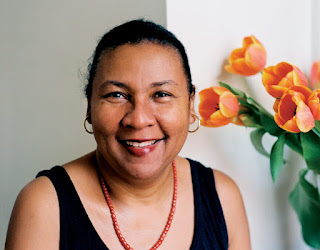 |
Born: September 19, 1921, Recife, State of Pernambuco, Brazil
Died: May 2, 1997, São Paulo, State of São Paulo, Brazil
Known for: Theories of education, advocacy of critical pedagogy
Education: Faculdade de Direito do Recife, Federal University of Pernambuco UFPE, Pontifical Catholic University of São Paulo
Influenced by: Karl Marx, Jean-Jacques Rousseau
|
1. MOST FAMOUS APPLICATION: In the United States, Freire has inspired the movement for “critical pedagogy,” which seeks to reconstruct both schools and society. Around the world, Freire’s work has been used by many revolutionary movements (such as Amílcar Cabral in Guinea Bissau, the Landless Workers’ Movement in Brazil, and the Zapatistas in Mexico), by popular literacy campaigns, and in the World Social Forums.
2. MIS-APPLICATION: Some educators take the words “popular education” to simply mean taking complex information and dumbing it down or sloganizing it, a misguided approach rooted in the very idea that Pedagogy of the Oppressed opposes: that the educators are experts while the students are empty and passive receptacles awaiting knowledge.
“Education either functions as an instrument which is used to facilitate integration of the younger generation into the logic of the present system and bring about conformity or it becomes the practice of freedom, the means by which men and women deal critically and creatively with reality and discover how to participate in the transformation of their world.” ~Paulo Freire, Pedagogy of the Oppressed
Over a lifetime of work with revolutionary organizers and educators, radical educator Paulo Freire created an approach to emancipatory education and a lens through which to understand systems of oppression in order to transform them. He flipped mainstream pedagogy on its head by insisting that true knowledge and expertise already exist within people. They need no “deposits” of information (what Freire calls “banking education”), nor do they need leftist propaganda to convince them of their problems. What is required to transform the world is dialogue, critical questioning, love for humanity, and praxis, the synthesis of critical reflection and action.
In short, Pedagogy of the Oppressed is education as a practice of freedom, which Freire contrasts with education as a practice of domination (see below).
Banking education: education as the practice of domination
Goal is to adapt people to their oppressive conditions.
Teacher attempts to control thinking and action of the students, who are treated as passive objects.
Assumes that people are merely in the world, not connected to it or each other.
Removes students from their context; teaches reality as unchangeable.
Treats oppressed people as marginal to a healthy society and in need of incorporation into it.
Fundamental to maintaining systems of oppression.
Teacher attempts to control thinking and action of the students, who are treated as passive objects.
Assumes that people are merely in the world, not connected to it or each other.
Removes students from their context; teaches reality as unchangeable.
Treats oppressed people as marginal to a healthy society and in need of incorporation into it.
Fundamental to maintaining systems of oppression.
Problem-posing education: education as a practice of freedom
- Goal is to transform structural oppression.
- Both educator and educand (Freire’s word for “student,” designed to convey an equitable and reciprocal relationship) teach and learn from each other.
- Assumes the world is an unfolding historical process; everything and everyone is interrelated.
- Begins with the educands’ history, present and unwritten future.
- Seeks to transform society to rehumanize both the oppressed and their oppressors.
- Fundamental to the revolutionary process.
Dialogue and participatory action research are two practices heavily influenced by Freire that are now common in the fields of popular education, critical pedagogy, Theater of the Oppressed, and eco-pedagogy. Freire explains that what most people think of as dialogue is really just debate, a zero-sum game in which people compete to deposit ideas into one another or name the world on behalf of others as an end in itself. In dialogue, on the other hand, both parties work together to name their world by exploring their lived experiences to identify common patterns and generate action.
Participatory action research, meanwhile, is a community-led process in which people determine solutions to their problems by gathering data from their peers, analyzing it, and then taking informed action. It’s a model of community organizing that builds the capacity and expertise of those on the front lines.
Unfortunately, many progressive movements today are still trapped in the “banking” approach to education, seeing the public as a passive receptacle of their information. According to Freire, transforming the world requires flipping this model and replacing it with ground-up practices of emancipatory education, organizing and action.

















